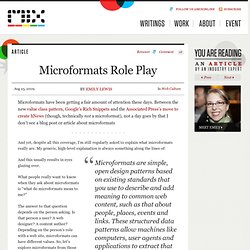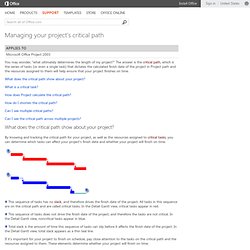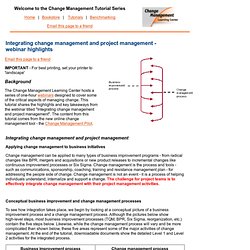

Android GUI PSD (High-Density)
Microformats Role Play. Microformats have been getting a fair amount of attention these days.

Between the new value class pattern, Google's Rich Snippets and the Associated Press's move to create hNews (though, technically not a microformat), not a day goes by that I don't see a blog post or article about microformats And yet, despite all this coverage, I’m still regularly asked to explain what microformats really are. My generic, high-level explanation is always something along the lines of: Microformats are simple, open design patterns based on existing standards that you use to describe and add meaning to common web content, such as that about people, places, events and links. These structured data patterns allow machines like computers, user agents and applications to extract that content for a wide range of uses.
And this usually results in eyes glazing over. What people really want to know when they ask about microformats is “what do microformats mean to me?” Users User Experience Enhancements Web Manager.
Semantic Web. The Semantic Web is a collaborative movement led by international standards body the World Wide Web Consortium (W3C).[1] The standard promotes common data formats on the World Wide Web.

By encouraging the inclusion of semantic content in web pages, the Semantic Web aims at converting the current web, dominated by unstructured and semi-structured documents into a "web of data". The Semantic Web stack builds on the W3C's Resource Description Framework (RDF).[2] According to the W3C, "The Semantic Web provides a common framework that allows data to be shared and reused across application, enterprise, and community boundaries".[2] The term was coined by Tim Berners-Lee for a web of data that can be processed by machines.[3] While its critics have questioned its feasibility, proponents argue that applications in industry, biology and human sciences research have already proven the validity of the original concept.
History[edit] Purpose[edit] Limitations of HTML[edit] Semantic Web solutions[edit] Managing your project's critical path - Project. You may wonder, "what ultimately determines the length of my project?

" The answer is the critical path (critical path: The series of tasks that must be completed on schedule for a project to finish on schedule. Each task on the critical path is a critical task.), which is the series of tasks (or even a single task) that dictates the calculated finish date of the project in Project path and the resources assigned to them will help ensure that your project finishes on time. What does the critical path show about your project? What is a critical task? How does Project calculate the critical path? How do I shorten the critical path? Can I see multiple critical paths? Can I see the critical path across multiple projects?
Tutorial - Integrating Change Management and Project Management. Applying change management to business initiatives Change management can be applied to many types of business improvement programs - from radical changes like BPR, mergers and acquisitions or new product releases to incremental changes like continuous improvement processes or Six Sigma.

Change management is the process and tools - such as communications, sponsorship, coaching, training and resistance management plan - for addressing the people side of change. Change management is not an event - it is a process of helping individuals understand, internalize and support a change. Erhvervsakademiet Copenhagen Business Academy. Hoda Al-Amood - Outlook Web App. Mozilla Firefox Start Page.